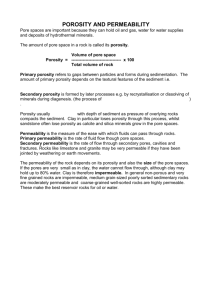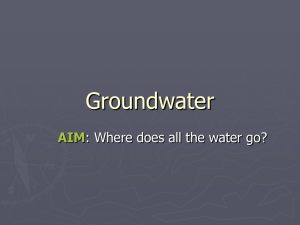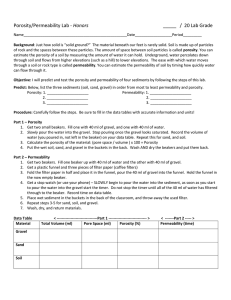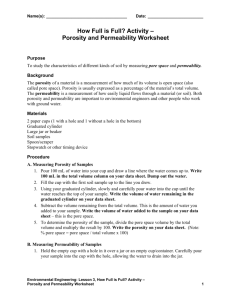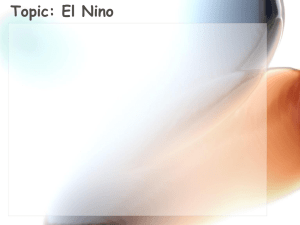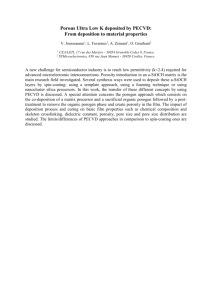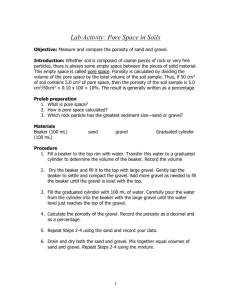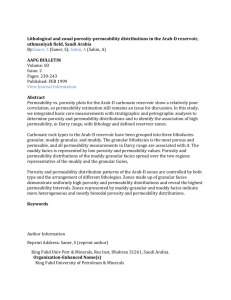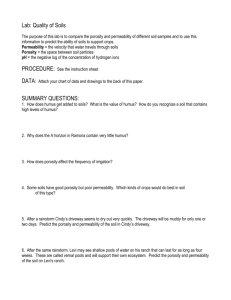Porosity and Permeability Lab
advertisement
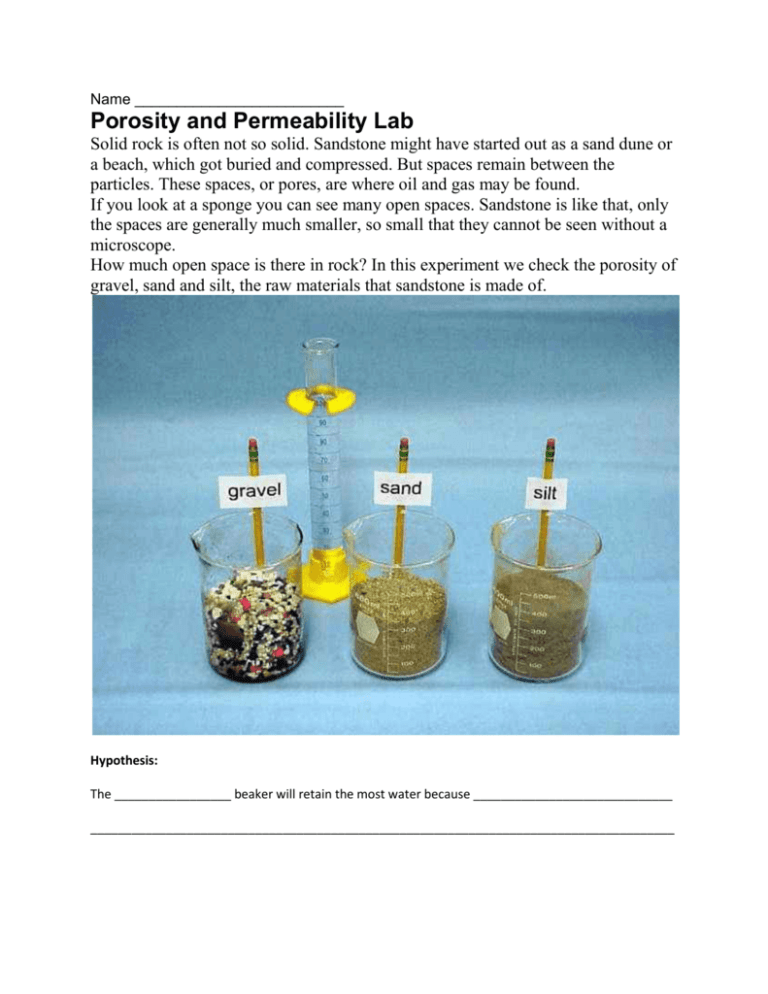
Name _________________________ Porosity and Permeability Lab Solid rock is often not so solid. Sandstone might have started out as a sand dune or a beach, which got buried and compressed. But spaces remain between the particles. These spaces, or pores, are where oil and gas may be found. If you look at a sponge you can see many open spaces. Sandstone is like that, only the spaces are generally much smaller, so small that they cannot be seen without a microscope. How much open space is there in rock? In this experiment we check the porosity of gravel, sand and silt, the raw materials that sandstone is made of. Hypothesis: The _________________ beaker will retain the most water because _____________________________ _____________________________________________________________________________________ You will need: Gravel, sand and silt 3 beakers, 250 milliliters each A 100ml graduated cylinder Water What to do: 1. Fill one beaker to the 200 ml mark with gravel. Fill the second beaker with 200 ml of sand, and the third with 200 ml of silt. 2. Fill the graduated cylinder to the 100ml mark with water. 3. Slowly and carefully pour the water into the first beaker until the water just reaches the top of the gravel. Record exactly how much water you use. If you need more than 100ml of water, fill the graduated cylinder again. 4. Follow step 3 again for the beaker with sand, and again for the beaker with silt. Calculating porosity: For each material, calculate the porosity by dividing the volume of water that you were able to pour into it by the total volume of the material. Then express this result as a percentage. For example If you were able to add 90ml of water to 350ml of gravel, the porosity would be 51 ml ––––––– = .2571 = 25.71% 200 ml Use the chart below to record your data and calculations. Show your work for each below and clearly label. Lab Practice questions: 1. Permeability is __________. A. the ability of a solid to allow fluids to pass through B. the process by which plants release water vapor to the atmosphere C. the amount of water vapor in the air relative to the maximum amount of water vapor the air can hold D. the percentage of pore space in the rock 2. Which of the following combinations make for the best groundwater reservoir? A. low permeability and low porosity B. low permeability and high porosity C. high permeability and low porosity D. high permeability and high porosity 3. If the amount of discharge in an aquifer exceeds the amount of recharge, the groundwater table A. will rise B. will drop C. will remain the same D. may rise or drop depending on the porosity 4. Which of the following statements about the water table is true? A. The water table changes when discharge is balanced by recharge. B. The water table has the same general shape as the topography. C. The water table is well below the land surface beneath lakes. D. The water table is elevated near high volume pumping wells. 5. What is the difference between the saturated and unsaturated zones of groundwater? A. The saturated zone has a higher porosity than the unsaturated zone. B. The saturated zone has a lower porosity than the unsaturated zone. C. The pore spaces in the saturated zone are completely full of water; the pore spaces in the unsaturated zone are not completely full of water. D. The pore spaces in the saturated zone are not completely full of water; the pore spaces in the unsaturated zone are completely full of water. 6. Based on this experiment what kind of sediment would you want to build your house on, explain why?

